Early Days: Leather Helmets and Wool Jerseys

When college football first started in the 19th century, uniforms were very basic. Inspired by the popularity of rugby, there weren't many rules and regulations in those early days. Uniforms were largely thrown together for comfort rather than safety or aesthetics. Players wore wool or sweaters rather than jerseys so that they didn't get cold during the games.
There were no pads underneath and no helmets. Those would come later as the sport itself evolved from a rugby copycat into an actual game with rules. As players recognized the need for increased protection, they turned to leather. The first shoulder pads were invented by Princeton University football player L.P. Smock in the late 19th century. Eventually, jersey makers began sewing leather patches onto and underneath those wool and cotton sweaters.
Early Days: Leather Helmets and Wool Jerseys
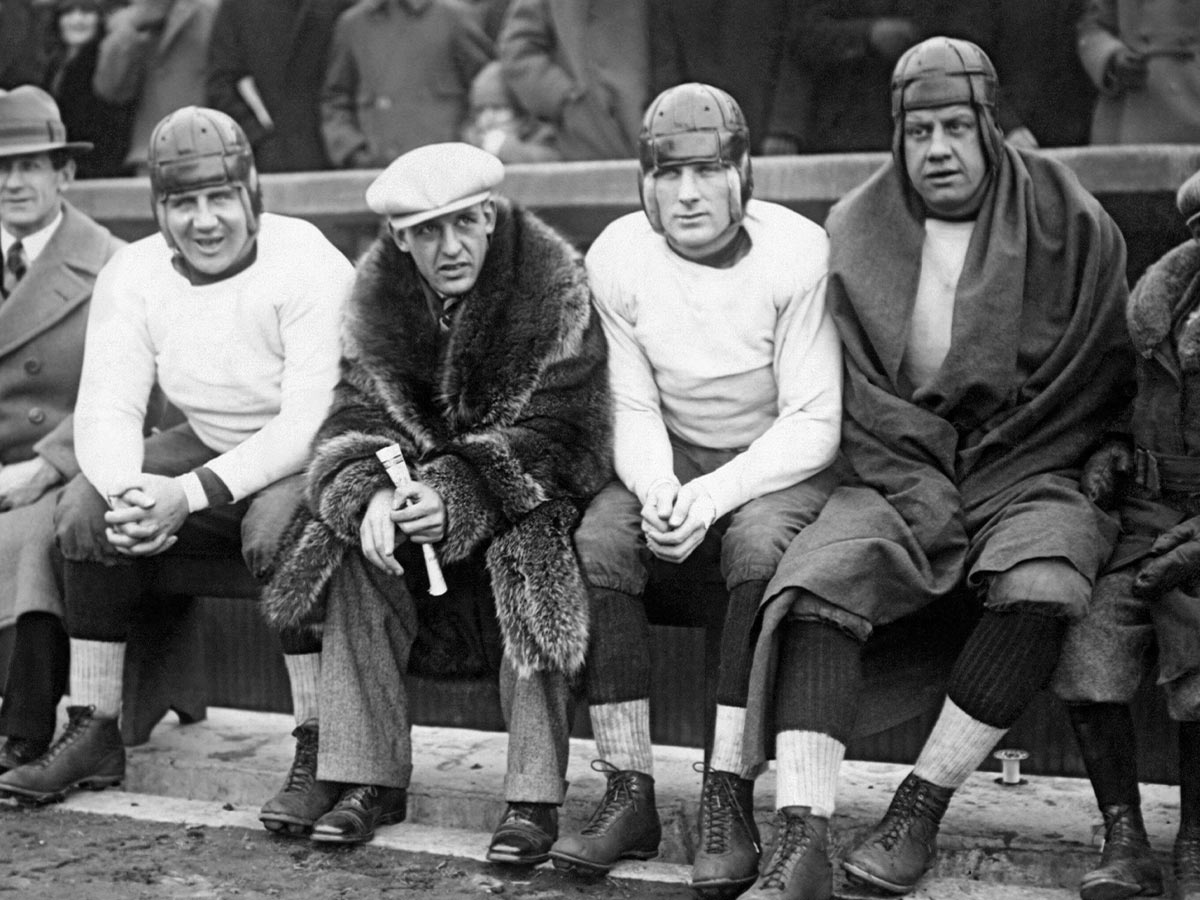
Early helmets were also made from leather, although the exact origin of the football helmet is up for debate. Some say that George Barclay of Lafayette College made the first football helmet in 1894. Others attribute the creation of the football helmet to a man named Joseph "Bull" Reeves.
A rough-and-tumble football player for the United States Naval Academy, a doctor told Reeves that if he received one more head injury, he'd go insane. The story goes that he had a shoemaker in Annapolis, Maryland, make him a helmet out of leather.
Advancements in Football Safety Gear
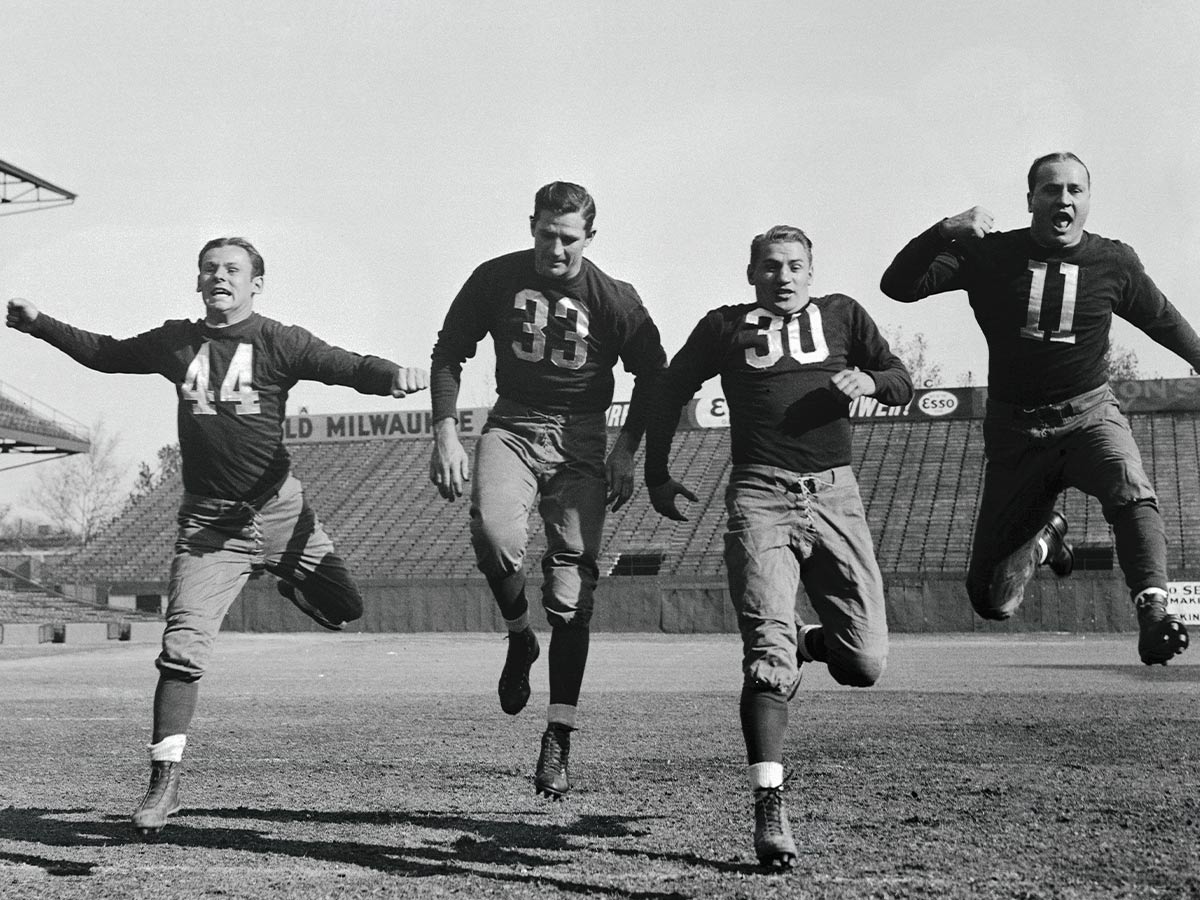
But those early helmets were largely worthless. Football was a brutal sport, and the leather offered very little protection. In 1905 alone, at least 19 college football players passed away while participating in the sport and many more were hospitalized. Things got so bad that President Theodore Roosevelt wanted to ban the sport in the United States. However, new rules were adopted to help protect the players.
Ever since, uniforms have continued evolving for the sake of a player's safety. By the 1930s, a better helmet with a suspension design was created to prevent a player's head from knocking against the shell of the helmet itself. By the 1940s, manufacturers began using plastic rather than leather, and face masks and mouthguards made an appearance to prevent injuries to the teeth and mouth, although these additions didn't become too popular until the 1950s.
The Birth of Team Colors and Logos

Increased safety measures weren't the only changes college football uniforms experienced over the years. Teams began focusing on the visual aspects to create a brand and a sense of identity. The choice to use specific colors for uniforms helped teams distinguish themselves from each other. Today, wearing your team colors is a time-honored tradition, but few fans know where those colors originated.
For example, ask any University of Georgia fan today, and they can tell you that their school's colors are red and black. However, few may know that back in the late 19th century, UGA incorporated a yellow-gold color. Legend has it that the yellow-gold color was the source of a fight between UGA and its biggest in-state rival, Georgia Tech, which also uses gold in its uniforms, and the school president declared that it was the color of cowardice, so he insisted they remove it.
The Birth of Team Colors and Logos
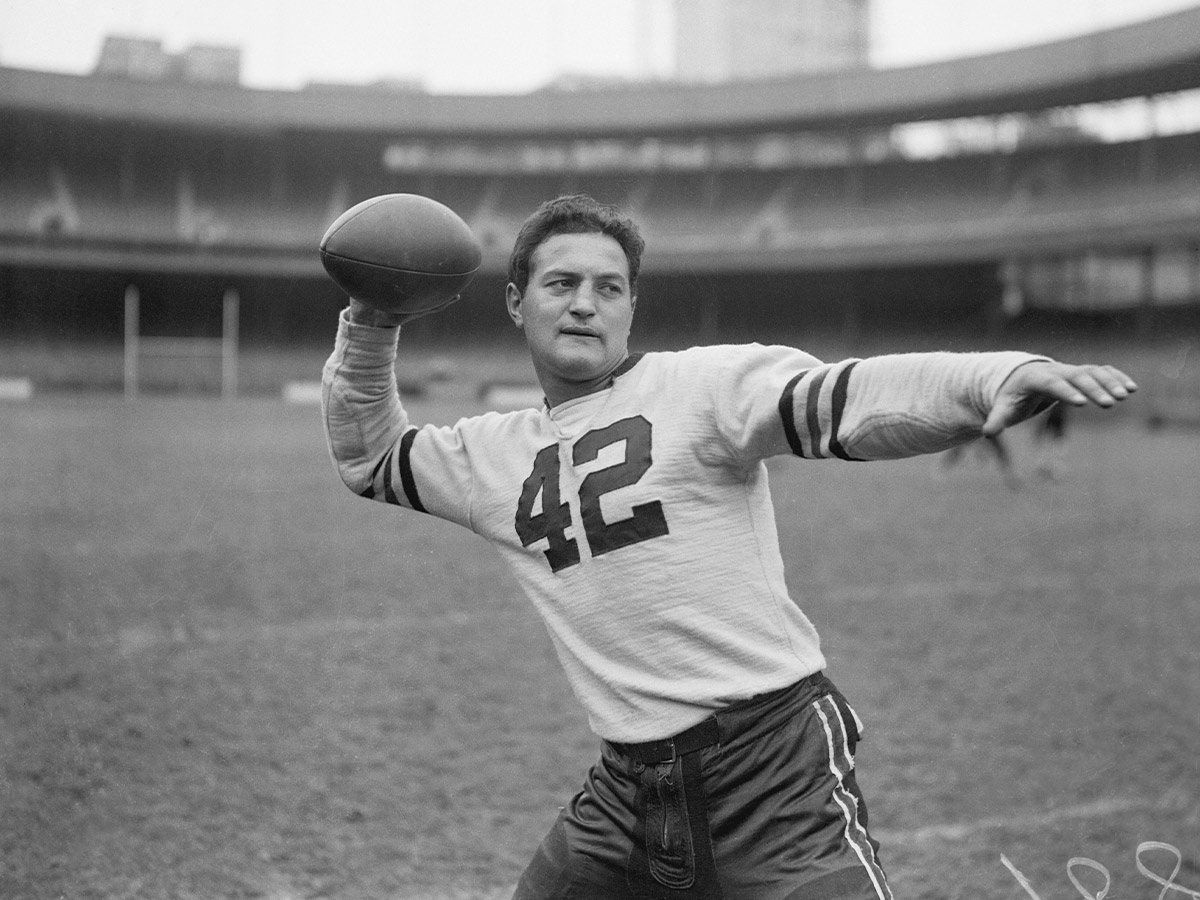
For other schools, choosing team colors was a matter of convenience. When the University of Florida at Lake City, which chose blue as a school color, and East Florida Seminary, which chose orange, came together to form the University of Florida, the traditional orange and blue school color combination was born.
Logos came along a bit later. Most people attribute them to a Los Angeles Rams running back who took some art supplies and painted ram horns on his helmet in 1948. Fans loved it, and suddenly, teams were coming up with their own logos to sport during games. Not only did it give the teams a sense of identity, but it made it even easier for fans to determine which team was which from a distance.
The Revolution of Materials: Nylon and Polyester Era

As football grew, so did the rules that would help tame the sport and make it a little less violent. That also meant making major changes to how uniforms were made so that they provided players with more safety and comfort.
By the mid-20th century, wool sweaters had been replaced with cotton, but they still left players soaked in sweat and uncomfortable. By the 1960s, uniform manufacturers switched to synthetic materials. Nylon and polyester were lightweight and better at wicking sweat and moisture away from players' bodies.
The Revolution of Materials: Nylon and Polyester Era
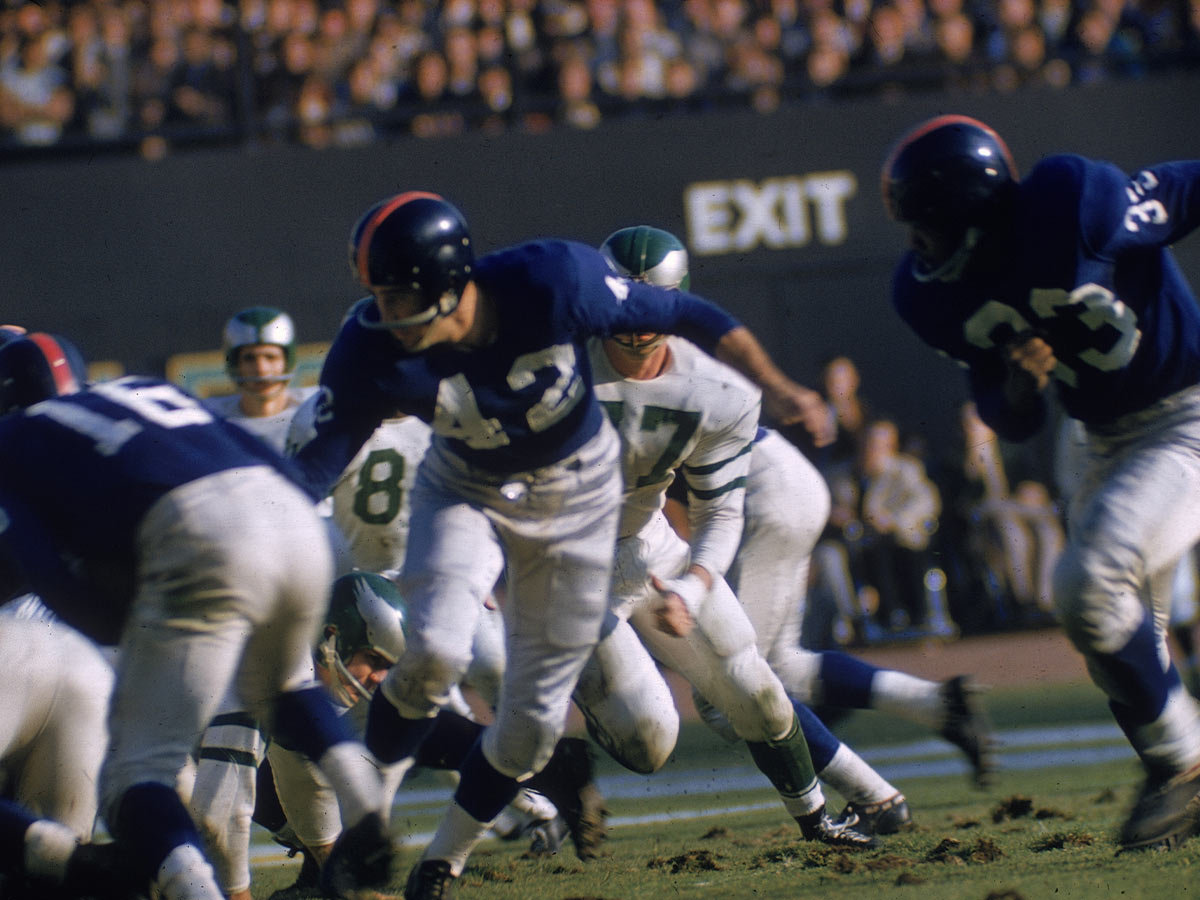
This kept players comfortable and helped them move around better. They were also more durable and less likely to be destroyed during a particularly physical game.
By the 1980s, polyester was the most popular choice for football uniforms, both due to comfort and the fact that they were easy to stylize with colors, logos, and other visually pleasing details.
Creative Flair: Stripes, Logos, and Helmet Designs
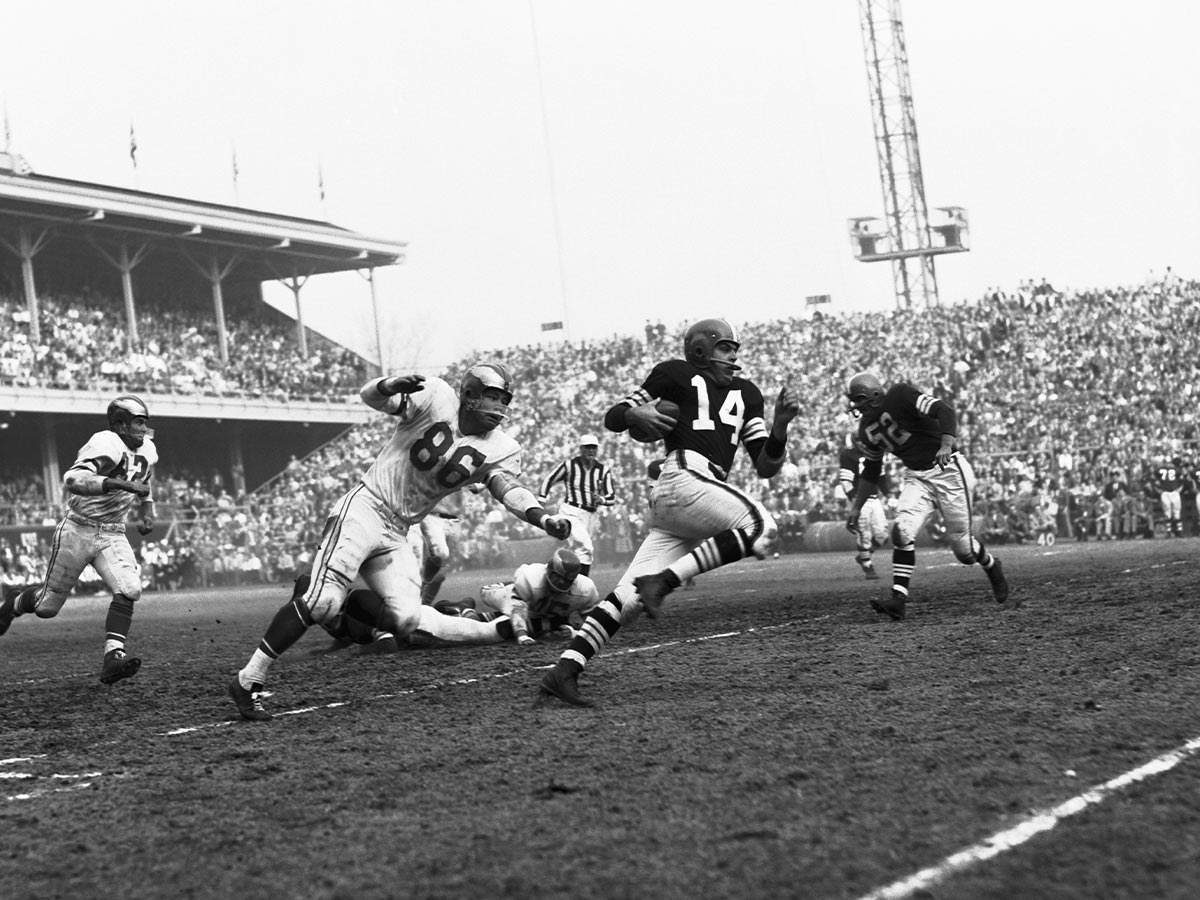
Speaking of visually pleasing details, the rising popularity of color TV in the 1960s also inspired many college football uniform changes.
While team colors were already important, they became even more essential to uniform design. This also led to the incorporation of other creative and stylistic choices like incorporating logos, stripes, and other designs.
Creative Flair: Stripes, Logos, and Helmet Designs
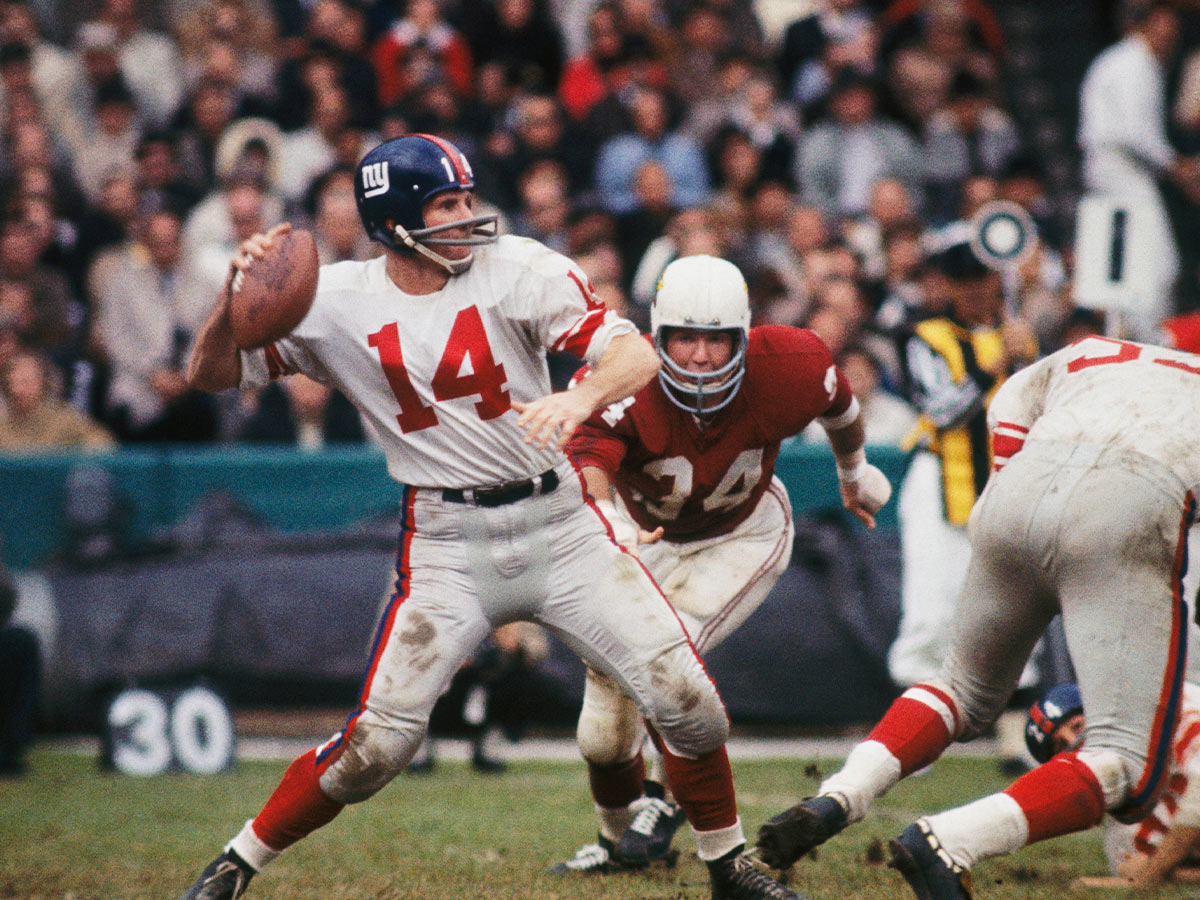
Helmets also saw a design upgrade. They were adorned with logos and team names as well as other design elements. One particular noteworthy helmet design is that of the University of Michigan's football team.
Some say it's the most recognizable in all of college football. Rather than using the team's logo, it has a blue and gold winged design that dates back to the 1930s. Several of the school's other sports teams have adopted it because it is so popular and iconic.
Technological Advancements: Performance Fabrics and Uniform Technology

Technology has advanced greatly over the last few decades, but we're not just talking about smartphones and artificial intelligence. Even football uniforms have become high-tech. These days, they're made of high-tech fabrics that are designed with an athlete's body, comfort levels, and performance in mind.
They're designed to keep the player cool and dry. They're lightweight so that the body can move at top performance levels. They even incorporate compression technology that helps keep certain muscles from getting sore and support the body to prevent injury and fatigue. This also helped create more durable jerseys.
Technological Advancements: Performance Fabrics and Uniform Technology
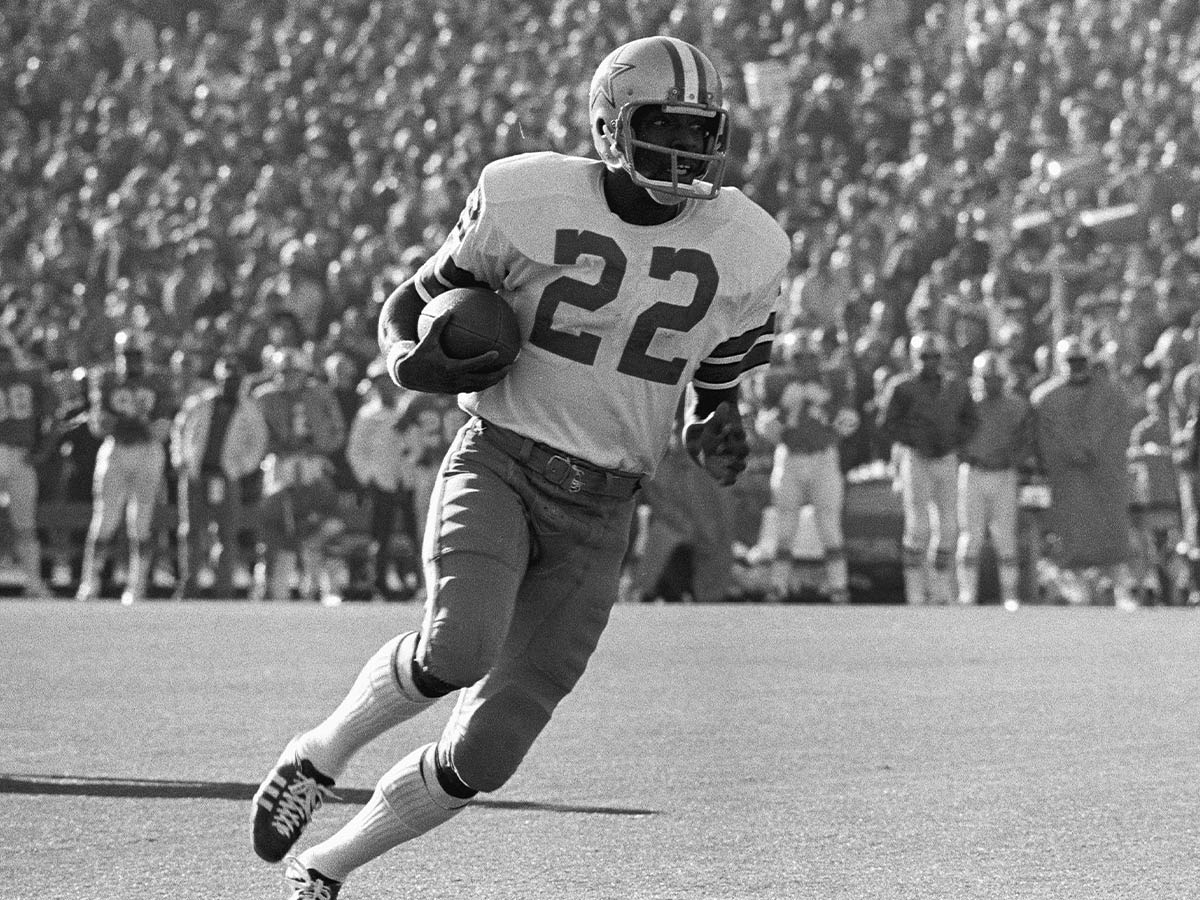
During the 1990s, there was a notable shift in college football uniform design with the incorporation of spandex. This period witnessed the emergence of tighter and stretchier uniforms, marking a departure from the looser-fitting styles of the past. The primary motivation behind this change was to address a tactical concern on the field.
By using spandex, teams sought to enhance the performance of their players and minimize the effectiveness of certain defensive maneuvers. The tighter and more form-fitting nature of these uniforms not only provided a sleeker aesthetic but also served a functional purpose on the field, contributing to a new era of college football uniform design during the 1990s.
Throwback Jerseys and Retro Trends

College football jerseys, and football jerseys in general, have come a long way over the last century and a half. Around the start of the 21st century, teams began bringing back "throwback" jerseys and helmets or replicas of jerseys from decades past.
These retro uniform trends have been super popular with fans and are often used to hype up and motivate a fanbase before a big game.
Throwback Jerseys and Retro Trends

In 2023 alone, 16 NFL teams used throwback jerseys for at least one home or road game.
Vintage football jerseys and uniforms are becoming so popular that even non-fans are purchasing them to make a statement about style.
Special Editions and Alternate Uniforms
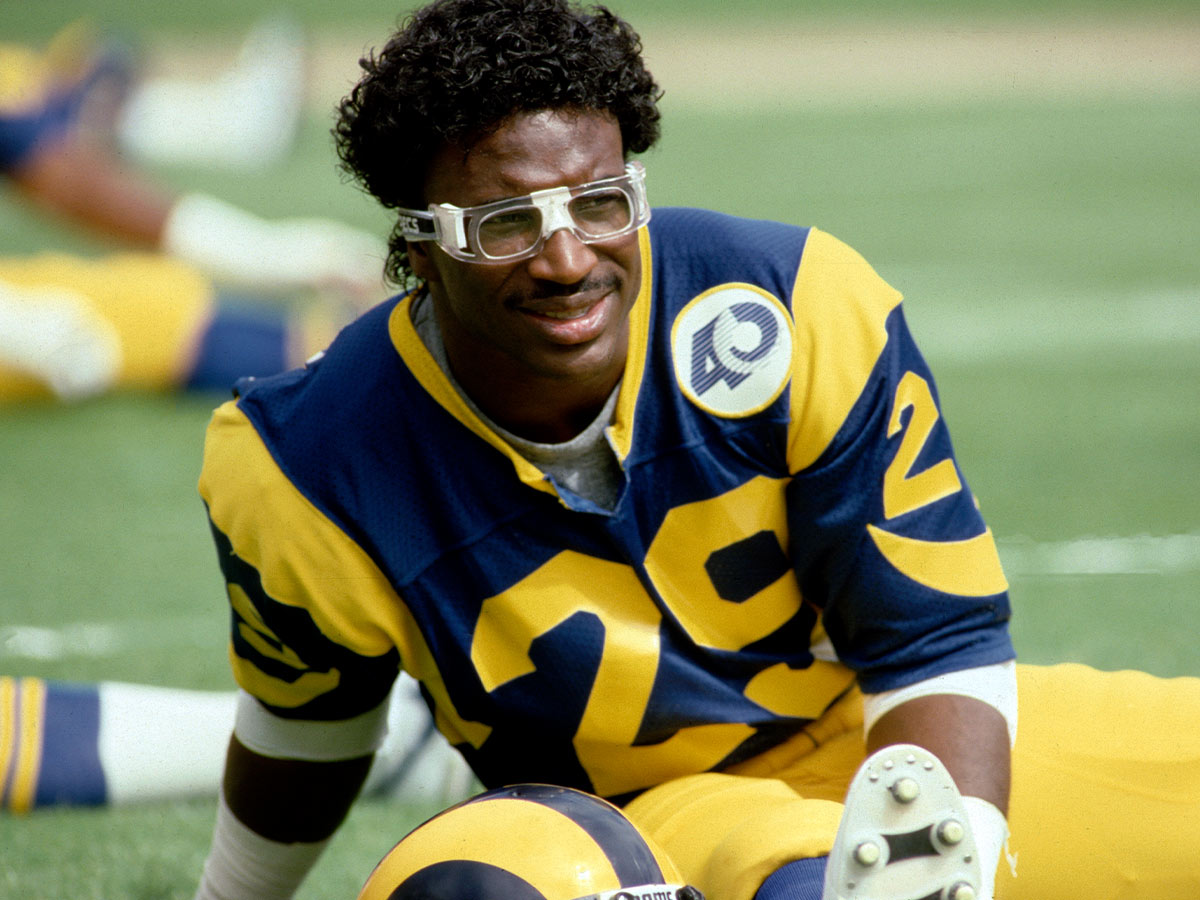
In addition to throwback uniforms, teams have begun playing games in special edition or alternate uniforms.
This is yet another way to hype up a fanbase before a big game, increase merchandise sales, and motivate fans to engage more with their favorite teams.
Special Editions and Alternate Uniforms
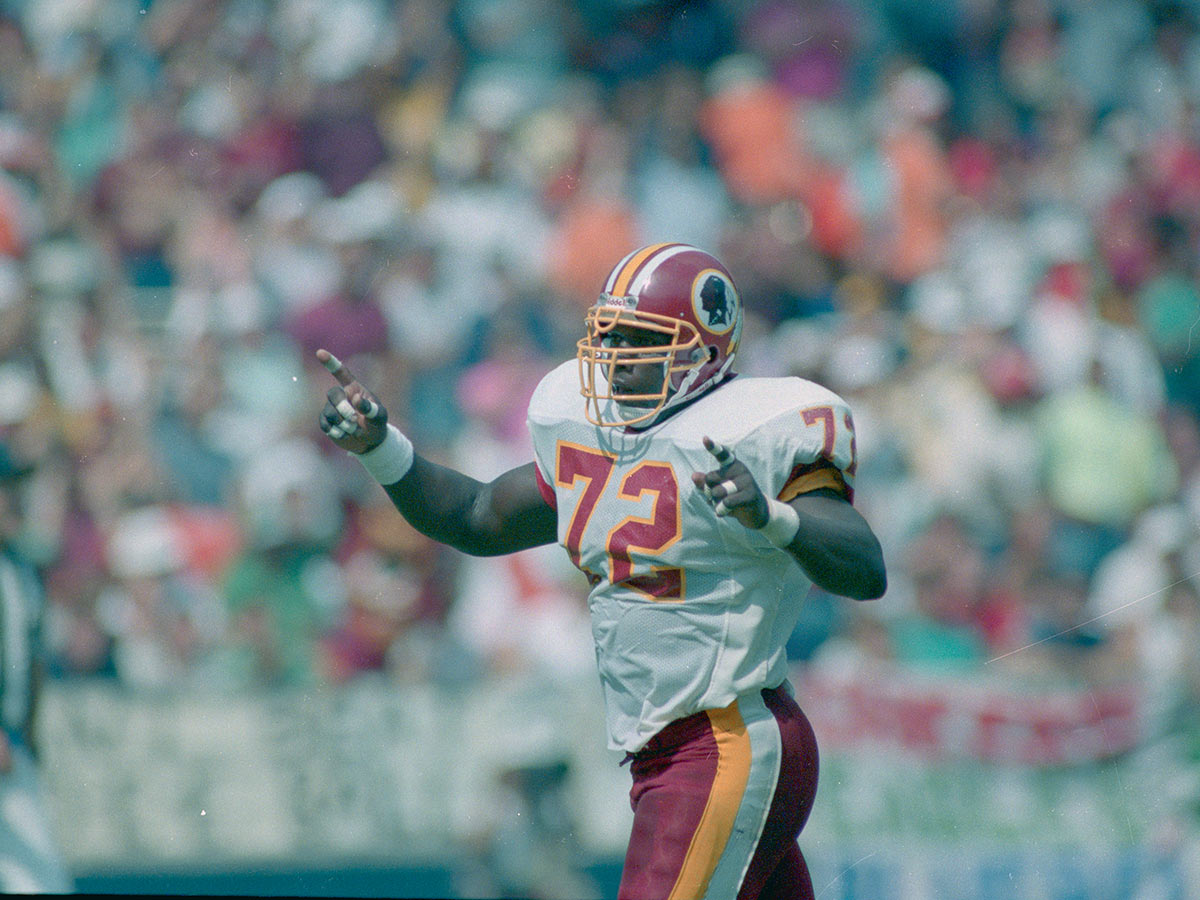
One popular trend is an all-black uniform. The University of Cincinnati Bearcats and the Michigan State University Spartans both debuted an all-black uniform at the start of the 2023 season that sent fans hurrying to buy official replica jerseys for their own wardrobes.
When Ohio State University played Michigan State in November 2023, they opted for all-gray uniforms that matched their helmets.
The Influence of Sports Apparel Brands

Money and college football go hand-in-hand these days. Look at the names of the bowl games. Duke's Mayo Bowl? Cheez-Its Citrus Bowl? You'll find that's especially true when it comes to the influence of sports apparel brands on the uniforms.
Many big-name companies, such as Nike, Under Armour, and Adidas, choose to sponsor uniforms in exchange for exposure that leads to more sales for them.
The Influence of Sports Apparel Brands

According to College Sports Madness, Nike sponsors 61.7 percent of all college football uniforms, while Adidas sponsors 23.4 percent, and Under Armour sponsors 11.7 percent.
There's big money involved too. In 2023, Ohio State signed a 10-year deal with Nike. The $252 million contract is the biggest college sports sponsorship deal to date.
Cultural and Social Influences on Uniform Design

Special uniforms aren't only used to hype up a fanbase or sell jerseys. Sometimes, they're put into place to represent a cultural or social issue or even support a cause.
For example, when the University of Florida played the University of Arkansas in November 2023, they wore a special "Saluting Those Who Serve" jersey, which was black and represented members of the military.
Cultural and Social Influences on Uniform Design

In 2020, the NCAA made the decision to allow players to wear special patches on their jerseys to support various social causes, giving players an opportunity to voice their opinions subtly on such matters. Similarly, the NFL now allows players to support social issues with phrases on their helmets like "Black Lives Matter."
In October 2022, which is Breast Cancer Awareness Month, the Oregon Ducks wore black jerseys with pink details. These "Stomp Out Cancer" jerseys were designed to help raise awareness for the cause.
Fan Reactions and Collectibles
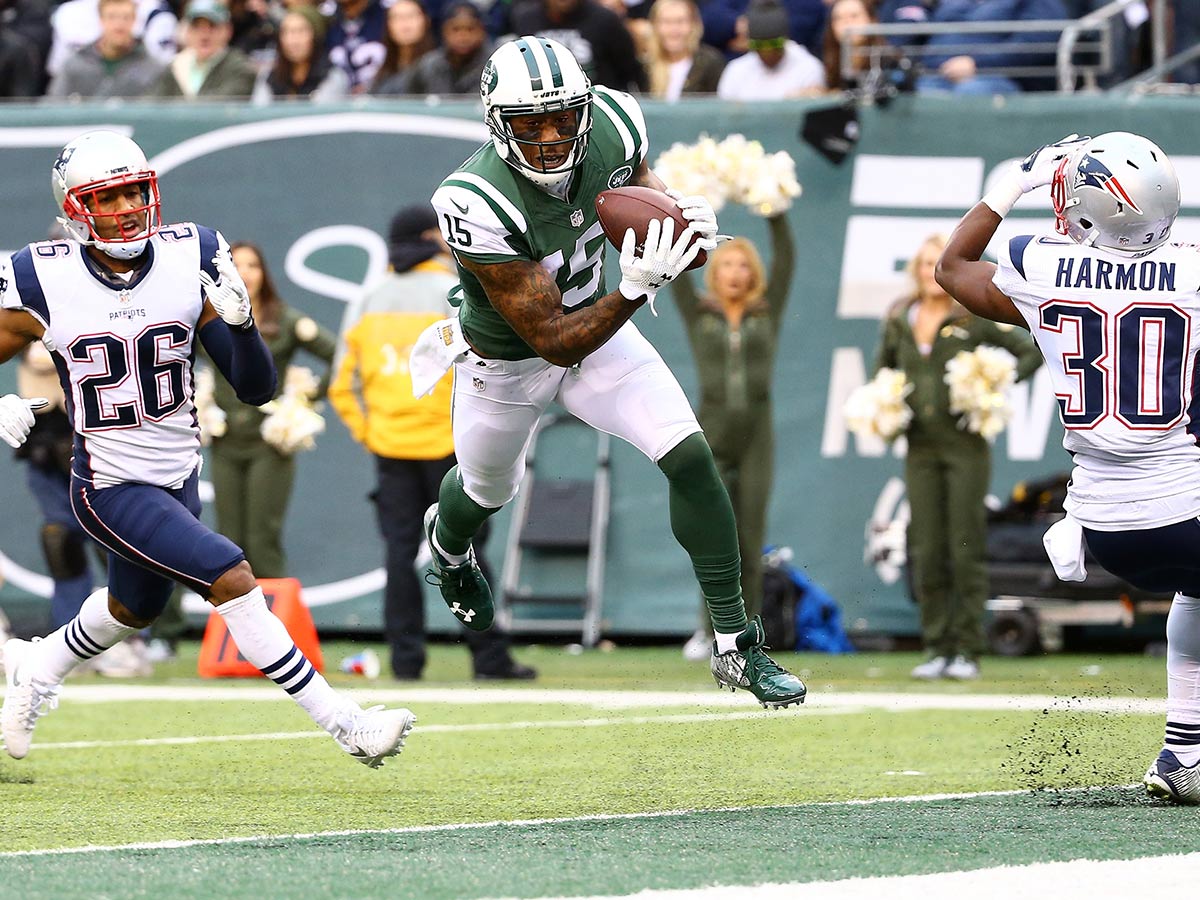
Much of the reasoning behind the evolution of football jerseys over the years has come from a need for more comfort and safety for the players. However, fans have played a large role in those changes, too.
Adding colors and logos makes games easier to watch and distinguish between two teams. Adding numbers and names to jerseys helps fans spot their favorite players.
Fan Reactions and Collectibles
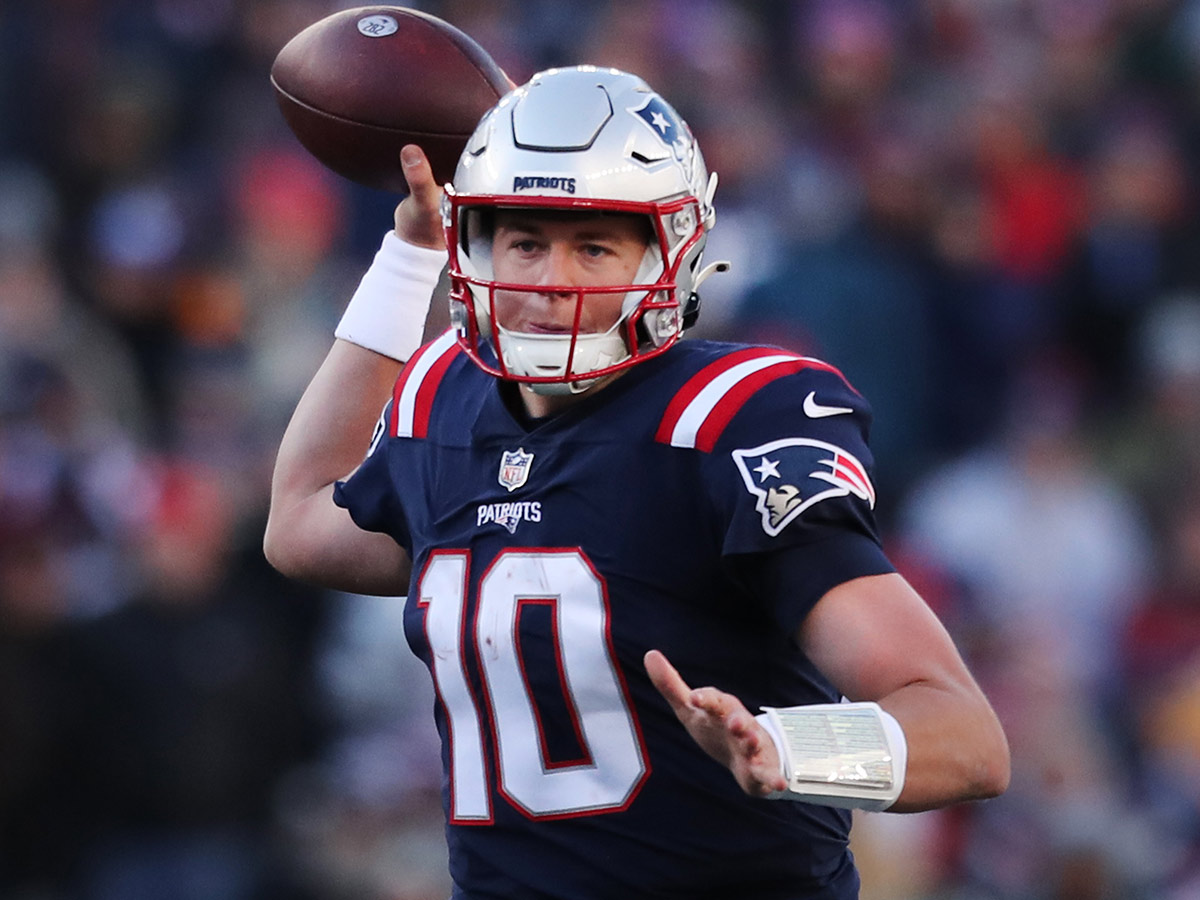
As football became increasingly popular, fans wanted to spend their money on team gear. Some wanted a jersey so they could support their favorite player. Others just wanted something in team colors that they could wear to a game.
As uniforms became more complicated and detailed, they also became collectors' items. When a team rolls out a throwback jersey, an all-black alternate jersey, or a jersey supporting a special cause, fans flock to stores to buy them even if they were only worn for one game. In turn, teams and their sponsor see an uptick in merchandise sales and everyone gets something from it.
To Wrap Up
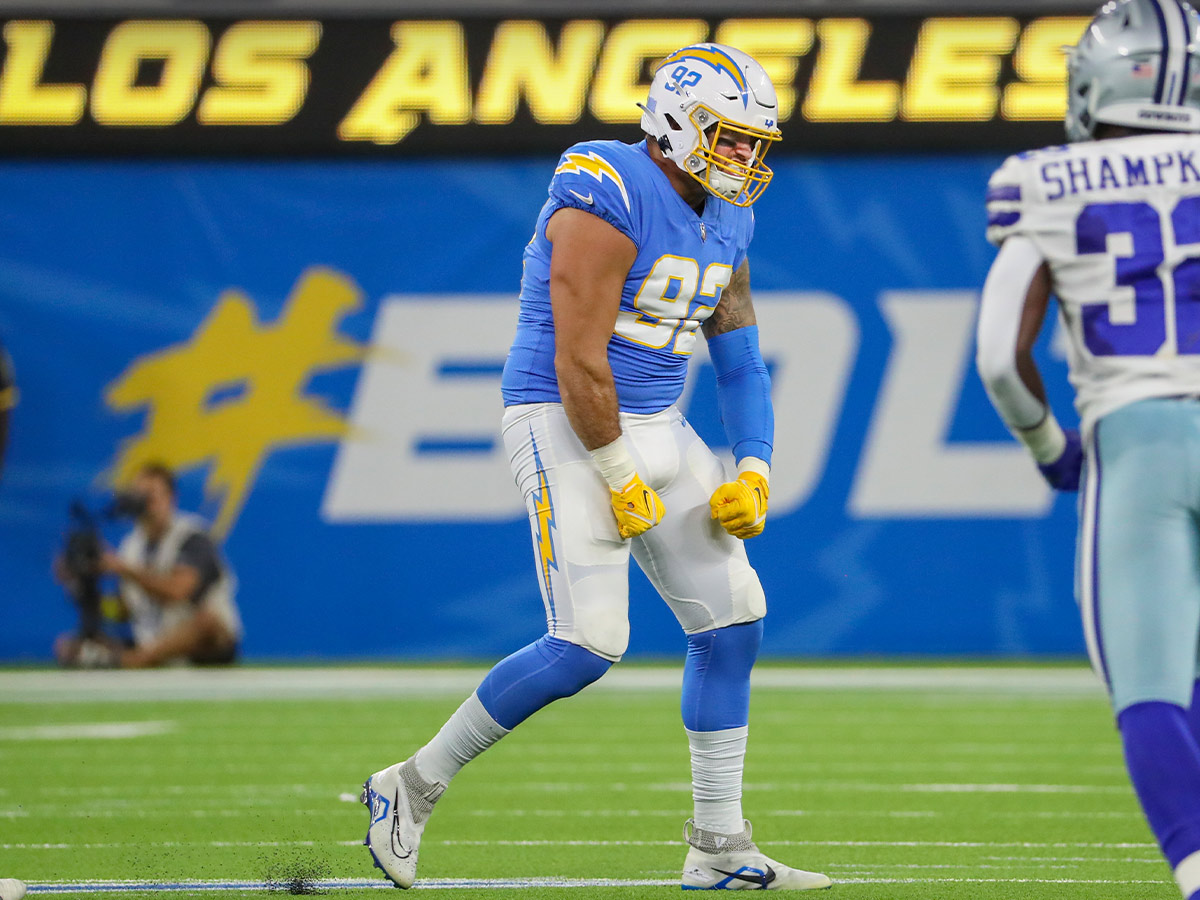
When football first began, uniforms were an afterthought. Players threw on a wool sweater and played the game. As the game became more regulated and serious injuries became more prominent, concerns for safety led to changes in the elements that went into a uniform. Pads and helmets were added. As rules were put into place, changes were made to increase comfort, such as using fabrics that wick sweat away or choosing lightweight materials that make it easier for players to run and move.
But uniforms are more than something a player wears on the field these days. They're representations of history. They're an opportunity for a school to make money. They're support for important causes. They're a way for players to show off their individual identities while unifying as a part of a team.
They're also a big part of the fan experience. Uniforms help bring a fan base together. They hype people up for big games. They give fans an opportunity to own a piece of their team and feel closer to the players. College football uniforms have changed much over the years, and we have no doubt that they will continue to evolve in the decades to come.
 Author
Ron Winkler
Last Updated: July 18, 2025
Author
Ron Winkler
Last Updated: July 18, 2025